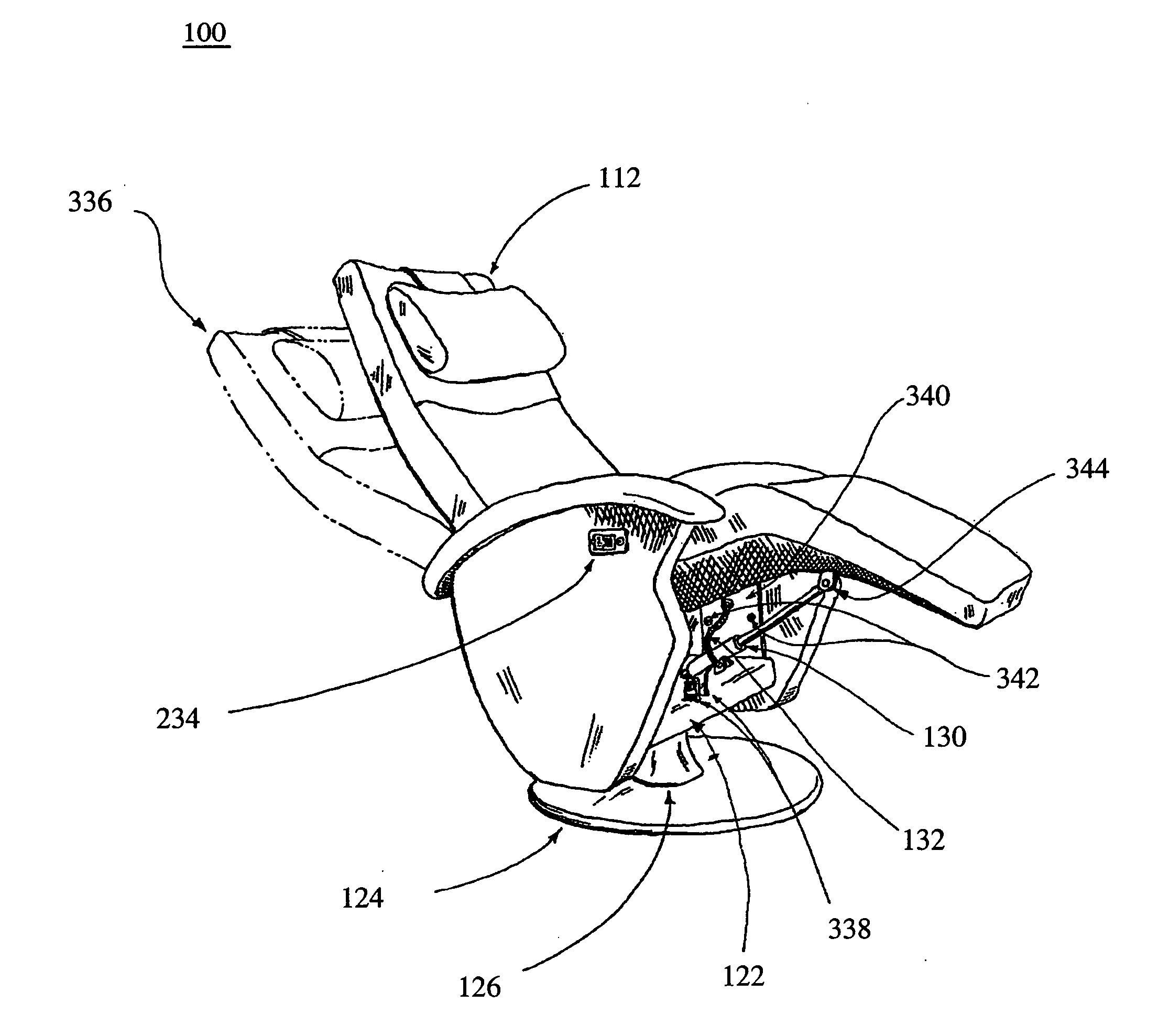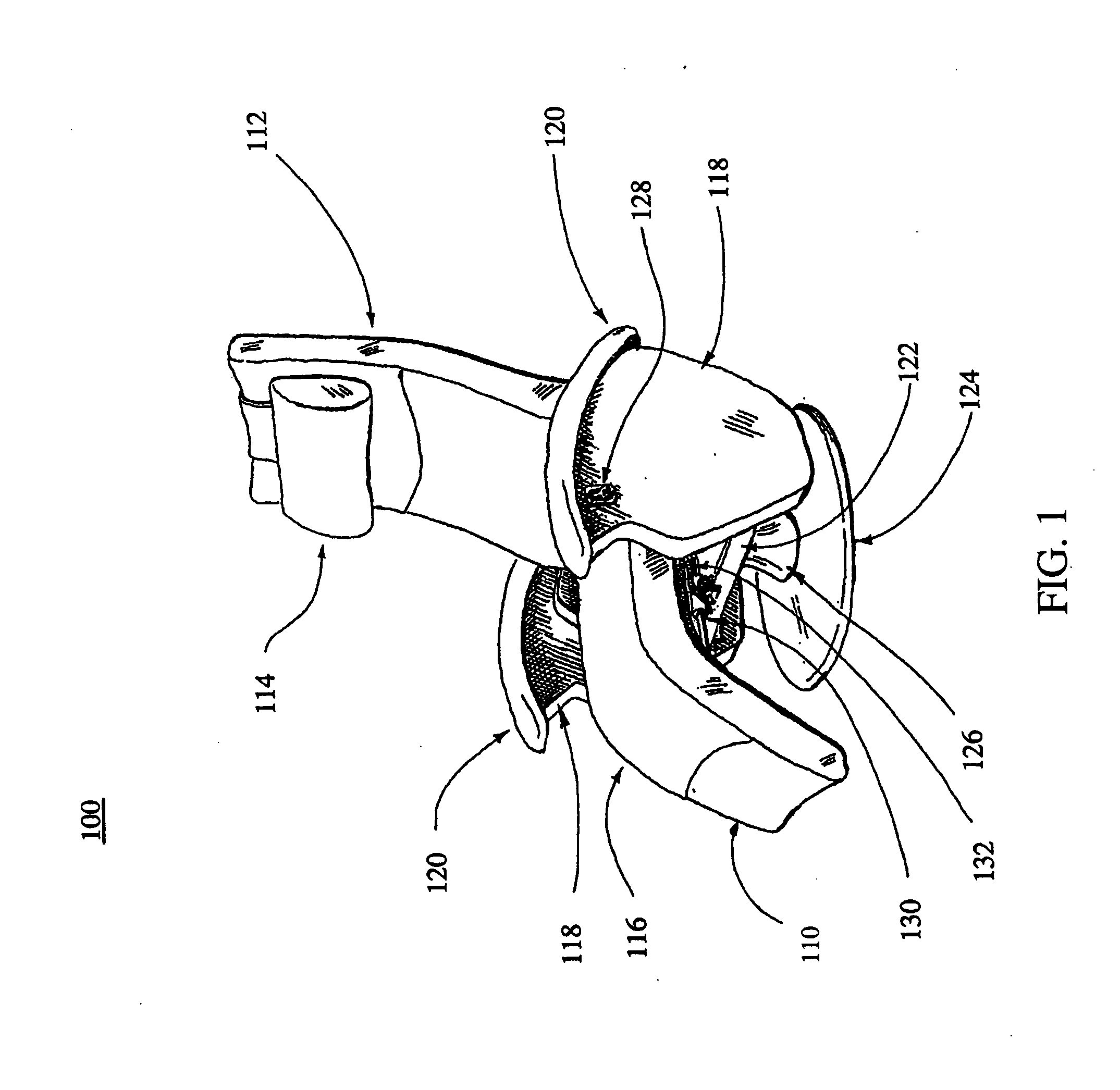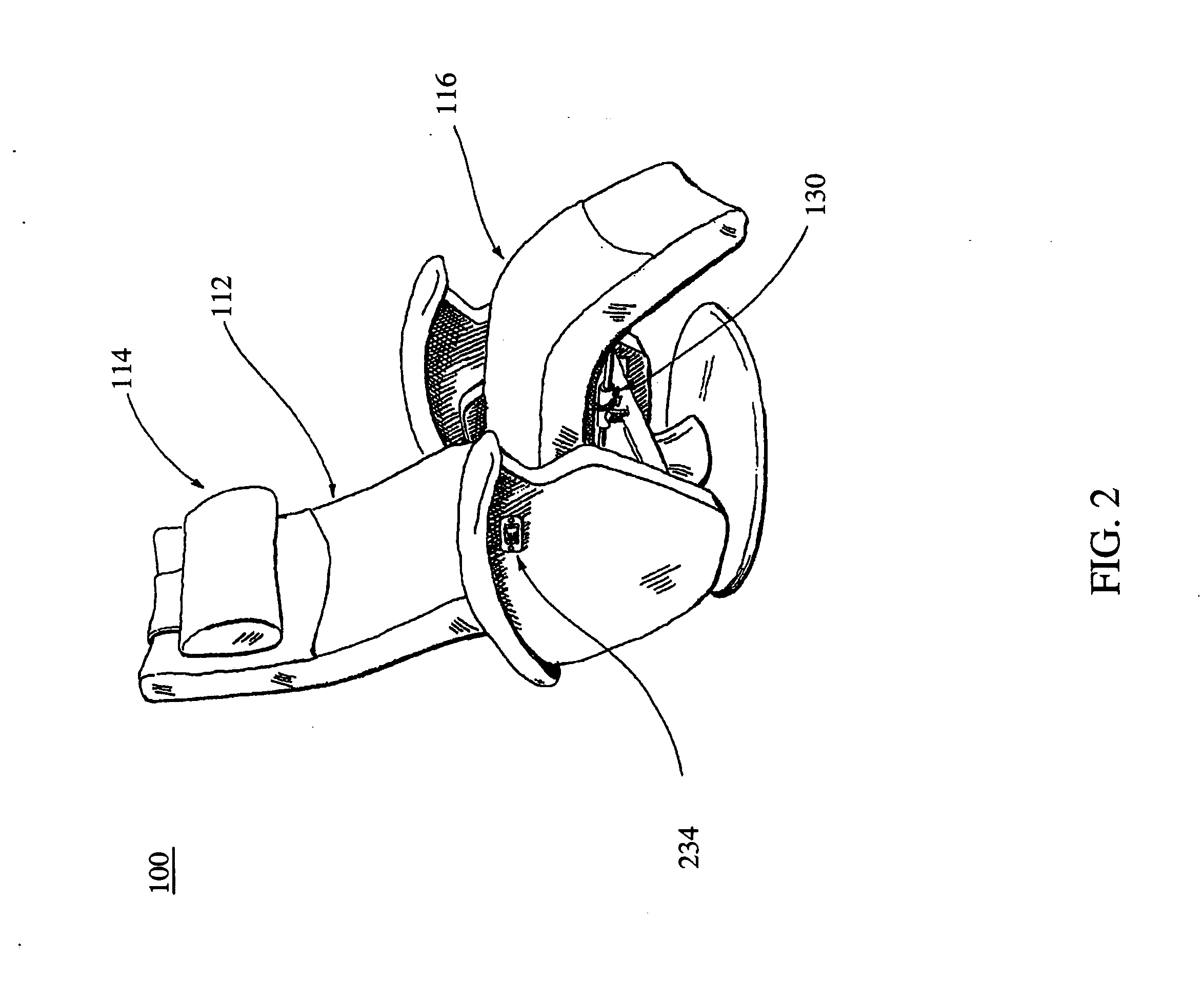Manual zero gravity reclining chair with adjustable back angle
a zero gravity reclining chair and adjustable back angle technology, applied in the field of furniture, can solve the problems of user discomfort, poor ergonomics, and difficulty in providing optimal upright open angle and optimal zero gravity open angle , to achieve the effect of reducing the number of users and reducing the number of complaints
- Summary
- Abstract
- Description
- Claims
- Application Information
AI Technical Summary
Benefits of technology
Problems solved by technology
Method used
Image
Examples
Embodiment Construction
[0021] In accordance with the present invention, apparatus and methods for comfortably positioning a person in a chair are presented. A zero gravity chair generally holds an occupant in a position where the angle between the legs and the torso may be greater than 90 degrees. Typically, when the chair is in the zero gravity position, the legs are elevated such that the legs are even with or above the occupant's heart. The disclosed zero gravity chair provides the occupant with the ability to vary the angle between a seat and a back sections and to rotate the seat and the back section together as a unit about a horizontal axis.
[0022]FIG. 1 illustrates a perspective view of a zero gravity chair in the upright position in accordance with certain embodiments of the present invention. A zero gravity chair 100 includes a backrest 112, an adjustable headrest 114, a seat 116, sides 118, arm pads 120, a center section 122, a base124, a swivel mechanism 126, a motion controller lever 128, a m...
PUM
 Login to View More
Login to View More Abstract
Description
Claims
Application Information
 Login to View More
Login to View More - R&D
- Intellectual Property
- Life Sciences
- Materials
- Tech Scout
- Unparalleled Data Quality
- Higher Quality Content
- 60% Fewer Hallucinations
Browse by: Latest US Patents, China's latest patents, Technical Efficacy Thesaurus, Application Domain, Technology Topic, Popular Technical Reports.
© 2025 PatSnap. All rights reserved.Legal|Privacy policy|Modern Slavery Act Transparency Statement|Sitemap|About US| Contact US: help@patsnap.com



